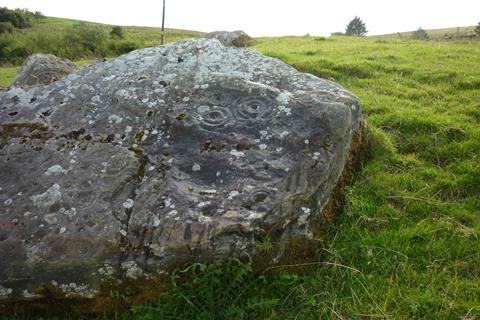A study by AMI member Dr Gerry Quinn highlights the potential of spiritual healing sites as fertile ground for novel antibiotics, particularly from Streptomyces bacteria, known for producing the majority of current antibiotics.
A pioneering study highlighted in The Microbiologist proposes that spiritual healing sites, revered for centuries, may hold the key to discovering new antibiotic-producing microorganisms.

Lead author and AMI member Dr. Gerry Quinn says that the study highlights the potential of culturally significant locations as fertile ground for novel antibiotics, particularly from Streptomyces bacteria, known for producing the majority of current antibiotics.
The study, titled “Could Spiritual Healing Sites be Fertile Ground for New Antibiotics?”, covers the main findings from a recent paper in the Journal of Religion and Health by Quinn and Harris.
READ MORE: Antimicrobial chemotherapy - which direction now?
READ MORE: Cures in crisis: vulnerable fungal species and their role in folk medicine
This explores how Streptomyces species, often found in extreme environments like deserts, caves, and alkaline soils, thrive in conditions overlapping with spiritually significant sites. These sites, including Northern Ireland’s Boho church graveyard, Egypt’s ancient tombs, and the Atacama Desert, share such characteristics as nutrient-poor soils and unique geology that may foster unique microbial adaptations, potentially yielding antibiotics with novel structures to combat antimicrobial resistance.
Healing soils
Dr. Quinn’s research originated in the West Fermanagh Scarplands, where local spiritual healing soils led to the isolation of Streptomyces sp. myrophorea, a bacterium that demonstrated remarkable activity against multidrug-resistant pathogens, including methicillin-resistant Staphylococcus aureus (MRSA) and carbapenem-resistant Acinetobacter baumannii (CRAB). Further discoveries of Streptomyces species from the same site demonstrated antifungal, antiviral, and antibiotic-potentiating properties, underscoring the potential of these locations.
The current study draws parallels between spiritual healing sites and traditional medicines, noting that caves, holy wells, and sacred soils—often linked to ancient healing practices—harbour Streptomyces species with proven antimicrobial activity. For example, a Streptomyces rich substance known as moonmilk from Belgian caves and cervimycins from Italy’s Grotta dei Cervi have shown efficacy against resistant bacteria. The research goes on to suggest that the cultural and spiritual context of these sites may reveal new insights into holistic healing approaches, combining microbial compounds with broader physiological effects.
Ancient relics and new resources
“Spiritual healing sites are more than just cultural relics; they can also be a new resource while carrying cryptic messages from the past,” said Drake Harris, one of the original study’s authors. He went on to add that “by understanding their unique cultural and spiritual context, we can unlock innovative approaches to tackling the global antibiotic resistance crisis.”
The authors call for further exploration of these sites, emphasizing the need to respect their cultural significance. Many key questions still remain unanswered about these mysterious Streptomyces including the role of environmental factors such as radon in their physiology and the interphase of their volatile metabolites on human physiology.







No comments yet